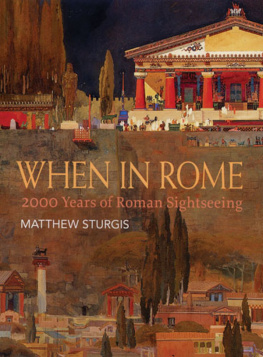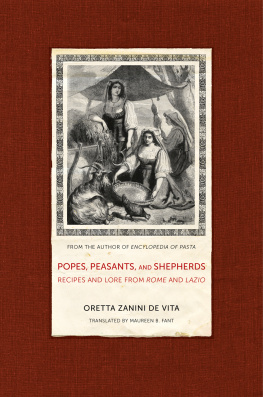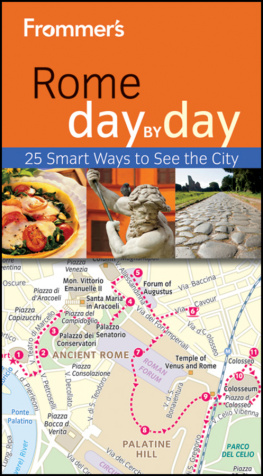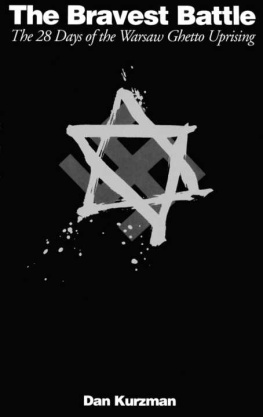THEATER OF ACCULTURATION
The Roman Ghetto in the Sixteenth Century
THE LECTURES THAT FORM THE BASIS OF THIS book were delivered at Smith College in the fall of 1996 when Kenneth Stow was the Ruth and Clarence Kennedy Professor of Renaissance Studies and a visiting member of Smiths Jewish Studies Program. The Kennedy Professorship honors two longtime members of Smiths Art Department who specialized in the Renaissance. The annual Kennedy lectures underscore the place of humanistic studies in the Smith curriculum. In this case they showed that the study of Jewish civilizations and cultures can deepen the understanding of how modern Europe developed and how civilizations and cultures, as a whole, evolve.
THEATER OF ACCULTURATION
The Roman Ghetto in the Sixteenth Century
KENNETH STOW
University of Washington Press, Seattle & London
Smith College, Northampton, Massachusetts
Copyright 2001 by the University of Washington Press
Printed in the United States of America
Design by Audrey Meyer
All rights reserved. No part of this publication may be reproduced or transmitted in any form or by any means, electronic or mechanical, including photocopy, recording, or any information storage or retrieval system, without permission in writing from the publisher.
Library of Congress Cataloging-in-Publication Data
Stow, Kenneth R.
Theater of acculturation : the Roman ghetto in the sixteenth century / Kenneth Stow.
p. cm.
Includes bibliographical references (p. ) and index.
ISBN 0-295-98025-7 (cloth : alk. paper)ISBN 0-295-98022-2 (pbk. : alk. paper) 1. JewsItalyRomeHistory16th century. 2. Rome (Italy)Ethnic relations. I. Title.
DS135.185 R6637 2001
945.632004924dc21
00-064822
The paper used in this publication is acid-free and recycled from 10 percent post-consumer and at least 50 percent pre-consumer waste. It meets the minimum requirements of American National Standard for Information SciencesPermanence of paper for Printed Library Materials, ANSI Z39.48-1984.
Every man has his mask.
ERWIN SCHENKELBACH, PORTRAIT PHOTOGRAPHER, JERUSALEM
CONTENTS
ACKNOWLEDGMENTS
IN APRIL 1963, Smith College held a symposium entitled The Renaissance Reconsidered. One of the contributions described the reconstruction of Romephysical Romeby Pope Martin V following his return from the lengthy papal exile in French Avignon about 1419. The Jews of Rome may have benefited from that reconstruction; their life under Martin V was certainly predictable and undisturbed. The author of that study, published in 1964, was none other than Smith Professor Ruth Kennedy. It is thus highly fitting that thanks to the professorship endowed in Ruth and Clarence Kennedys memory, the three 1996 Kennedy Lectures that I gave about the Jews of Rome in the much changed and turbulent setting of mid-sixteenth-century Rome, out of which this book grew, should also have been delivered at Smith. It is with pleasure and gratitude that I thank all those who made my tenure at Smith and these lectures possible, in particular Dean John Connolly and President Ruth Simmonsall in the hope that the original lectures, and this present enlarged study, in some small way carry forward the Kennedys important work.
Following their delivery and on the way toward publication, the lectures benefited from the comments and observations of friends and colleagues at Smith too numerous to mention. Estela Harretche explained to me the intricacies of the interaction between theater and audience. I also thank Adam Teller, Katherine Beller, Laurie Nussdorfer, Deborah Jo Miller, and Robert Stacey. I was able to finish preparation of the manuscript while a member and fellow of a research group studying the Historicity of Emotions at the Institute for Advanced Study, the Hebrew University, Jerusalem. The work of this group, organized by Yosef Kaplan and Michael Heyd, led directly to significant additions. I also benefited from the incisive comments made after a close reading of the penultimate draft by Natalie Davis, herself a member of the group. Finally, I thank Naomi Pascal, Julidta Tarver, and Leila Charbonneau of the University of Washington Press for their faith in this book and for their editorial constancy. Anna Foa read the entire work more times than she would care to remember. Responsibility for the contents is, of course, mine.
KENNETH STOW
University of Haifa
1996 Kennedy Professor in Renaissance Studies, Smith College
THEATER OF ACCULTURATION
The Roman Ghetto in the Sixteenth Century
INTRODUCTION
The Jews of Rome and the Rhythms of Roman Jewish Life
STORY, PLACE, AND SETTING
This study is about strategies of cultural survival. Its specific subject is the Jews of Rome in the mid-sixteenth century: their persons, their families, their neighborhoods, their formal and informal institutions. It is also a study of how they found ways to preserve, and even enhance, their individual and collective identities. At the end of three hundred years of ghettoization (15551870), these identities emerged relatively intact. However, what separated Jews from non-Jews in Rome was not only the obvious religious barrier of two permanently conflicting faiths. Jews and Christians, especially the Catholic Christians of Reformation Rome, who are the Jews counterparts in this study, also differed on social and cultural planes. These differences, sometimes only a question of attitude, were usually so subtle that one is hard pressed to find them acknowledged. It is also doubtful that the Jews of Rome would have realized that these minor variants of social custom and comportment might generate a permanent state of low-key friction. Jews and Christians were attuned to the religious gap distancing them one from another. They also knew the consequences of remaining steadfastly Jewish. Yet, paradoxically, it was just these subtle cultural differences, together with the obligato of low-key friction, and the ways in which these two were mutually reinforcingthat is, the modes and matrices of acculturationthat combined to both generate and sustain a Roman Jewish microculture, and thus to ensure Jewish cultural continuity.
The three essays at the heart of this study explain this unverbalized strategy of survival, a version of what the late Amos Funkenstein called the dialectics of acculturation. So successful, in fact, was this dialectic that despite behavioral and cultural differences, Jews appear to have convinced themselves that they were as Roman as they were Jewish, as Jewish as they were Roman, and entitled to behave accordingly. However, the Jews were not oblivious to the gapsmall or occasionally large as it may have beenbetween their convictions and actuality. This gap had to be bridged with respect both to the Jews self-image and to the image they wished to project to non-Jews, especially ecclesiastical authorities. This they did by adopting measures that may best be named theatrical. This theatricality, as we shall see, became fundamental to Roman Jewish life.
What I am searching out in these essays, therefore, is not a traditional portrait, a chronological recounting of events, institutions, and personalities. My aim is to describe and account for a series of often illusive behavioral modes. And it is in this spirit, reflecting what the historian Charles Beard pointedly called








